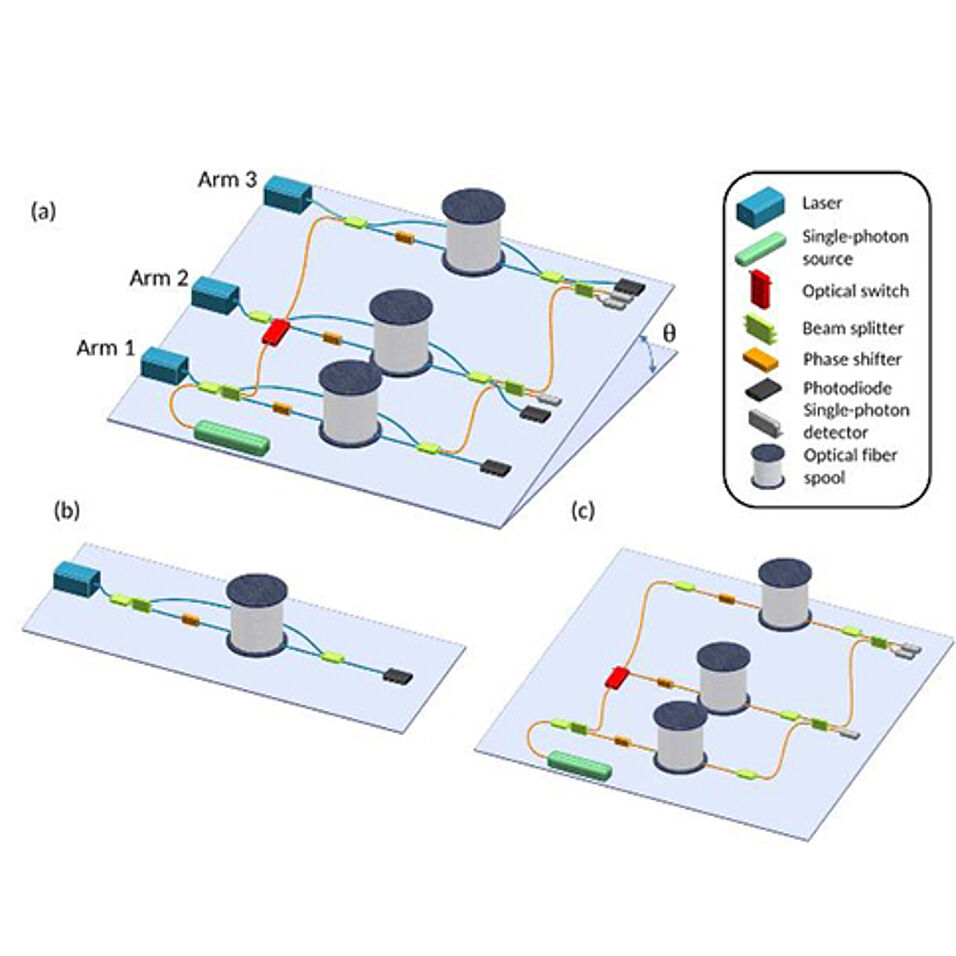You can find the online document here.
Publication appeared in New Journal of Physics

Sketch of the interferometric scheme used to resolve the gravitationally induced phase shift of single-photons.
(a) Schematic drawing of the complete setup: the photons (orange and blue paths) are used as interfering particles whereas classical laser light (blue path)
is used to stabilize the interferometer by means of an imbalanced MZI in each arm as the angle of inclination (θ) changes. The laser exciting arm 1 can also be used to calibrate the interferometer to operate at the quadrature point in horizontal position (θ=0). (b) Stabilization mechanism: the entire interferometer can be kept at the quadrature point during rotation—without erasing the
gravitational phase information—by means of an imbalanced MZI in each arm.
(c) Phase detection: single photons are coupled into the stabilized interferometer and are used to observe the gravitationally induced phase shift by measuring the difference in photon
counts between the detector in arm 2 and the detectors in arm 3 for each angle
θ. The high frequency modulation provided by the optical switch creates a time-varying gravitational signal in a low-noise band at the detectors.
